Quang Tri City and Citadel
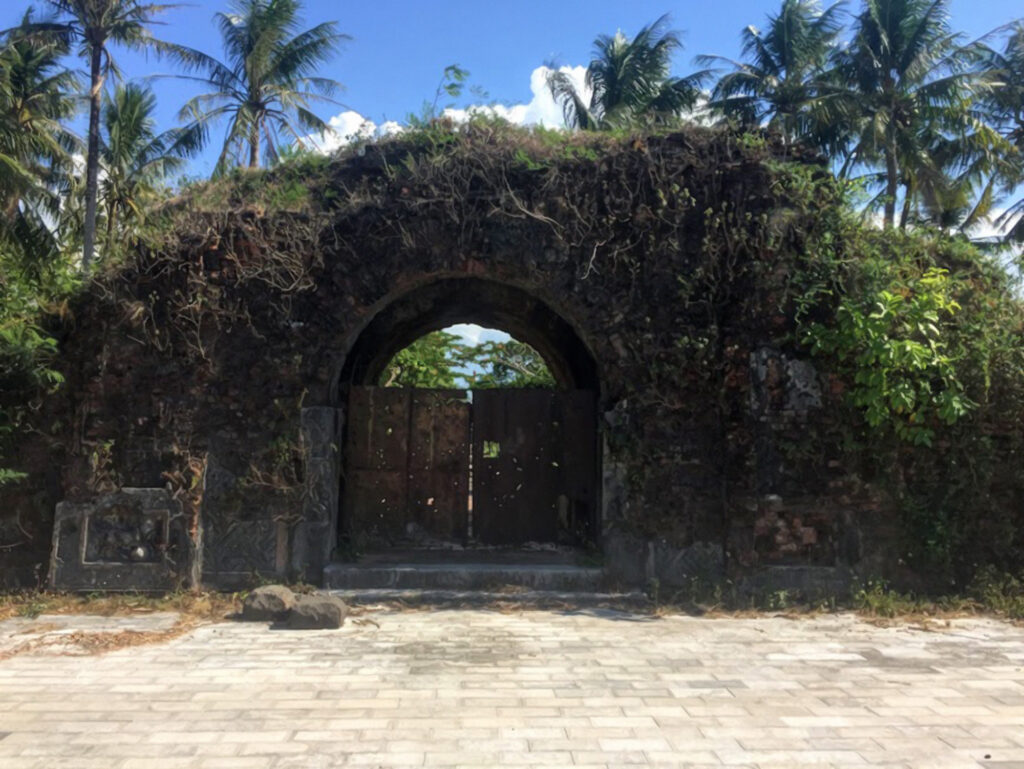
Quang Tri province was at one time one of the most densely militarized regions on the planet. The province shouldered an overwhelmingly disproportionate share of the Vietnam War’s combat, devastation, and loss. Formerly the northernmost province of the Republic of Vietnam, the Demilitarized Zone (DMZ) sat on Quang Tri’s northern border at the Ben Hai River on the 17th Parallel. It was just below the DMZ that the majority of US and ARVN personnel, bases, and equipment were located, along the famous Route 9. Quang Tri received more carpet bombing sorties, airstrikes, and artillery strikes than any other province during the war. Quang Tri also received more than its share of Agent Orange defoliation and landmines. All of these legacies of war are present to various extents in Quang Tri province today.
By the end of the war in 1975, there wasn’t much left in Quang Tri. Most of the population had long since fled the province. Few functional structures or buildings remained in Dong Ha and Quang Tri cities. The province’s forests were gone. It’s estimated that 11 of 3500 prewar villages remained. The province was a moonscape of bomb craters, tree stumps, destroyed war materiel, garbage, shells of buildings, and unexploded ordnance. Quang Tri Province still contains the country’s most unexploded ordnance, and has seen the highest number of accidental deaths from UXO since the Vietnam War.
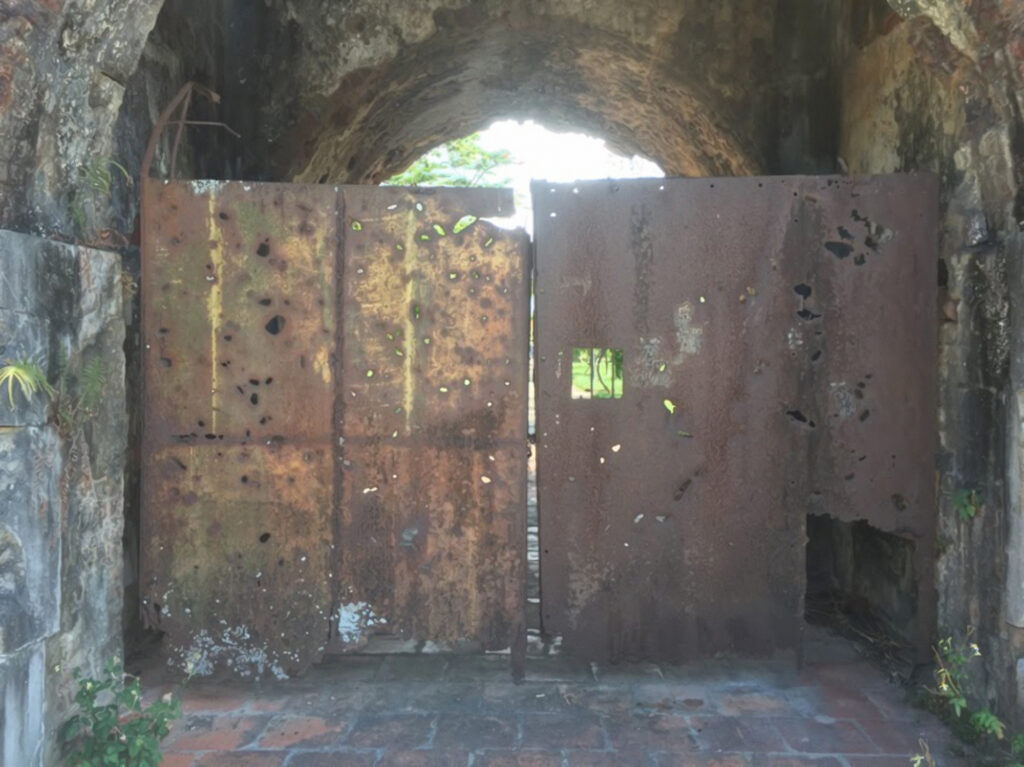
In 1972, both the ‘Vietnamization’ strategy and the Paris Peace Talks were underway and US troops were withdrawing from Vietnam. By the end of 1972 about 25,000 US personnel remained in Vietnam, a fraction of the peak of more than 500,000 in 1968. It was in that context that North Vietnam launched the Easter Offensive, with about 125,000 troops. It was the biggest PAVN offensive of the war. The goal was a three-pronged attack on the 1) Cambodia border area northwest of Saigon, 2) Kontum in the Central Highlands, and 3) Quang Tri province. The 1972 Easter Offensive was absolutely devastating to the city.
During the initial phase of the offensive, the PAVN captured all of Quang Tri Province. A lull followed, and the communists began their work of collectivizing local farms amidst a big exodus of Catholics and those with connections to the Saigon government. South Vietnam countered in June by assaulting the city. In the interim most experienced PAVN units slipped out, and inexperienced replacements were inserted with orders to defend Quang Tri. The defense was concentrated in the Quang Tri Citadel, which was a walled imperial city built in 1814. The ARVN struck Quang Tri on 28 June. The fighting was vicious and house-to-house. The ARVN advance was exhausting and slow. Aided by US aircraft which flew nearly 5500 missions of which over 2000 were B-52 strikes, Quang Tri Citadel was finally recaptured in mid-September. ARVN killed in action was over 7700 men, and the PAVN lost over 10,000 troops. Twenty Americans died in the battle.
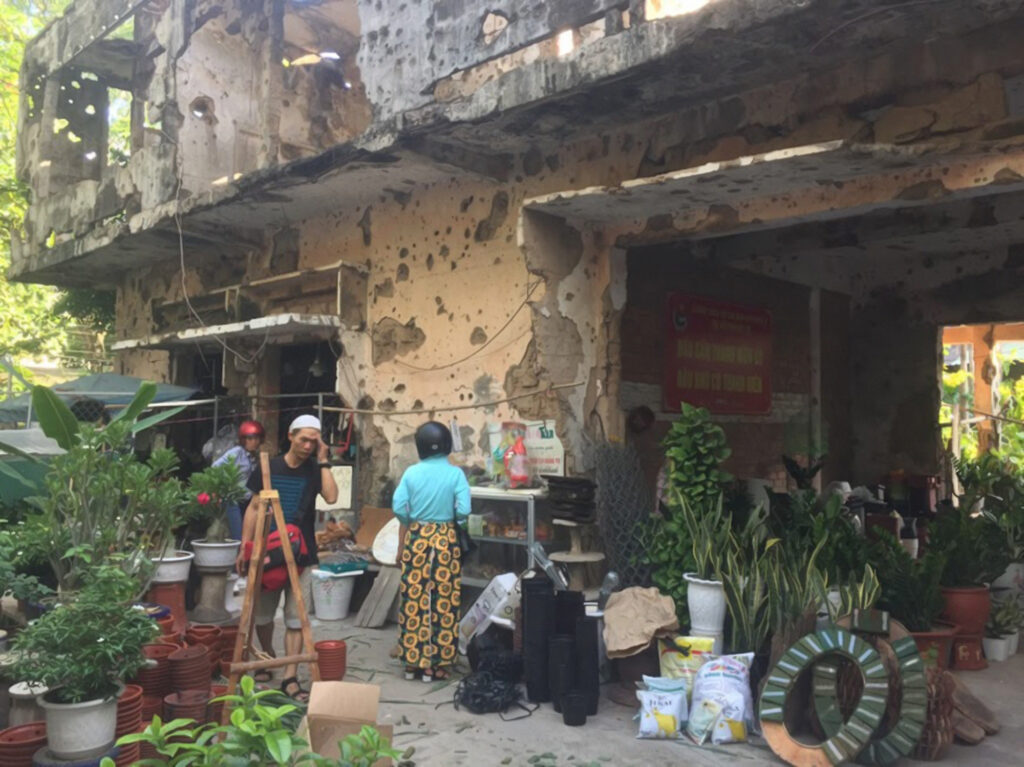
By the end of that year’s combat, a mere four structures remained in Quang Tri City.
Quang Tri Citadel
The Citadel is probably 750 square meters. During Vietnam’s imperial era, each of Vietnam’s provinces had a Citadel, which housed administrative buildings and served as a symbol of the Hue Emperor’s power and reach. Many of the walls and gates surrounding the site are original. The moat is original. As the PAVN made its last stand here in 1972, these walls are filled with bullet holes. One old structure remains inside the Citadel: part of a prison built by the French in the colonial period. It’s not a generous structure, and the remaining prison cells are tiny.
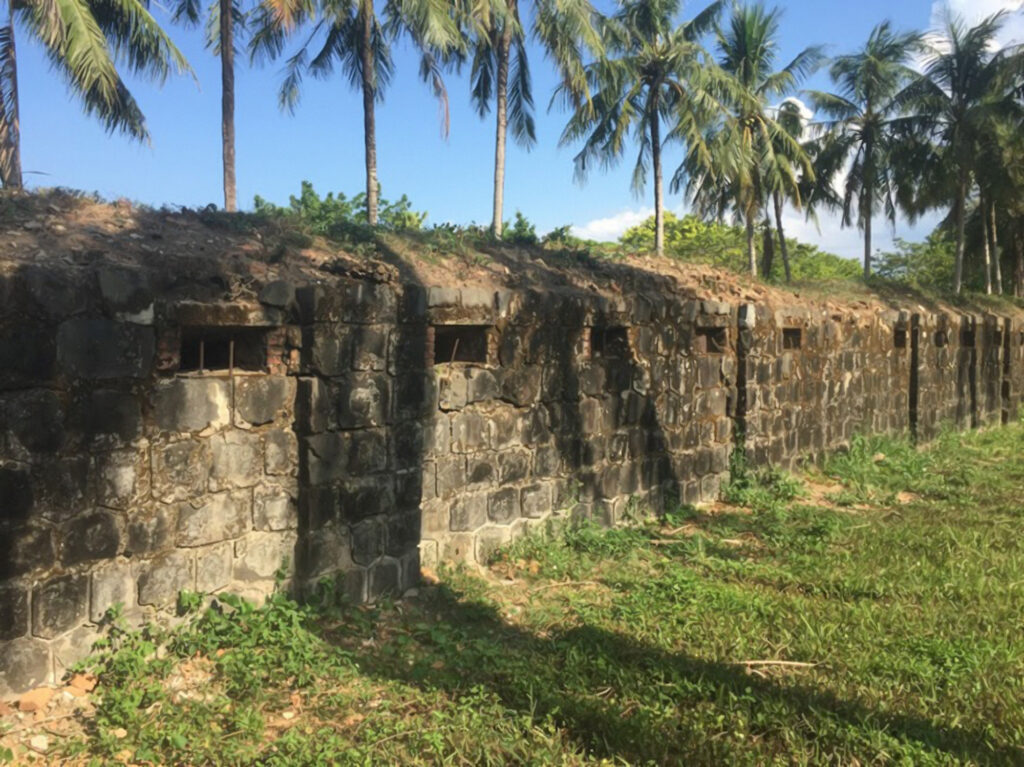
Today the Vietnamese government has turned the interior of the Quang Tri Citadel into a sculpture park. It’s a tranquil spot. Numerous sculptors from around the country contributed large pieces, most of which touch on different aspects of the war – family, patriotism, and sacrifice. In the middle of the park is a large shrine and altar. On the day that I was there, a group of former PAVN soldiers was making a pilgrimage. Groups of vets come to Quang Tri for this purpose pretty much every day. There’s also a history museum at the site. Its two floors and has artifacts, photos, and documents from the battle.
Bo De School
A few blocks from the Quang Tri Citadel is another of the four structures remaining from 1972. What stands now is a small two-storey building covered in bullet holes. Big sections of its walls were destroyed by rockets and the damage is preserved. Bo De was a Buddhist secondary and high school built by monks in 1959. At its peak, it had about 1000 students. It must have been a lot bigger in 1971.
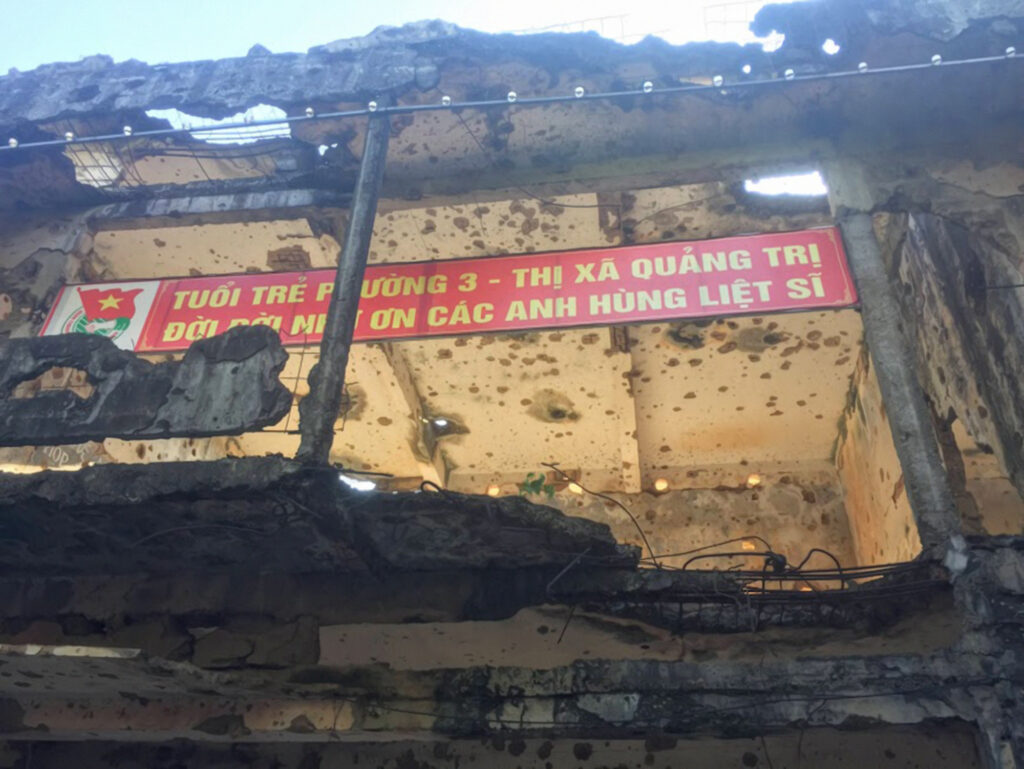
The local government decided to leave this section of the school intact as a reminder of the battle. On a leafy street, it’s surrounded by houses and small shops. The ground floor of the building is a plant nursery, and a woman sells potted plants and flowers there. I walked up the stairs to the second floor and looked inside the classrooms. One still had its original blackboard at the front of the class. Someone had brought chalk with them in the mid-90s and written in Vietnamese:
Bo De 1967-1972 24th Reunion. The school is still here. But where are all the old teachers and old classmates?
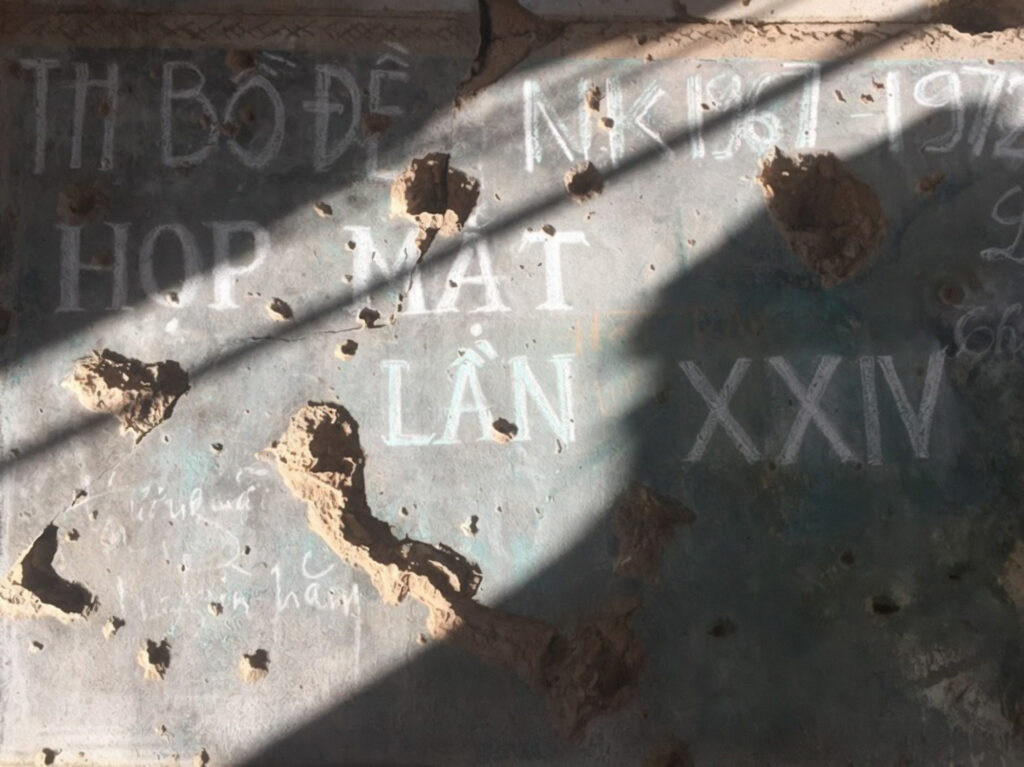
La Vang Cathedral
On the outskirts of Quang Tri City, La Vang Cathedral is a special place for Vietnamese Catholics. All that remains from 1972 is the original steeple and tile floor of the chapel. Again, covered in bullet holes. It sits adjacent to sculptures and a shrine to the Virgin Mary built in the 1960s during the Ngo Dinh Diem era.
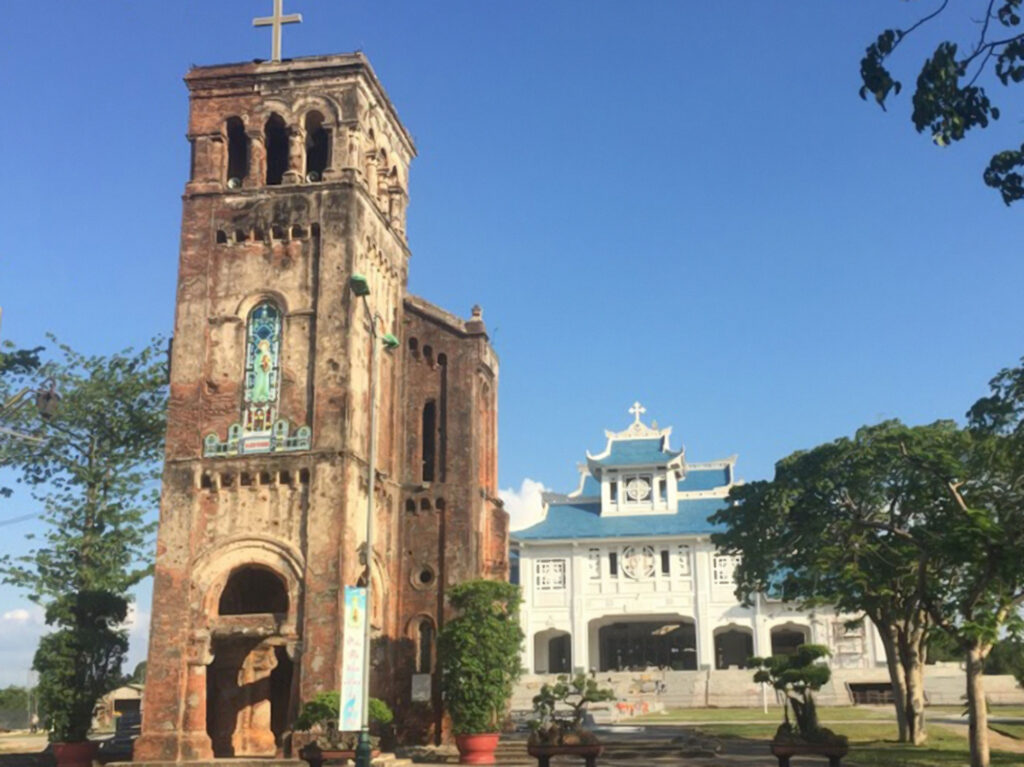
Long Hung Church
Situated right on busy Highway 1, Long Hung Church is the final of the four structures. Similar to Bo De School, the government chose not to raze the church and instead leave it standing as a memorial. The roof is gone, but several walls remain. The church took a lot of small arms and rocket fire in 1972.
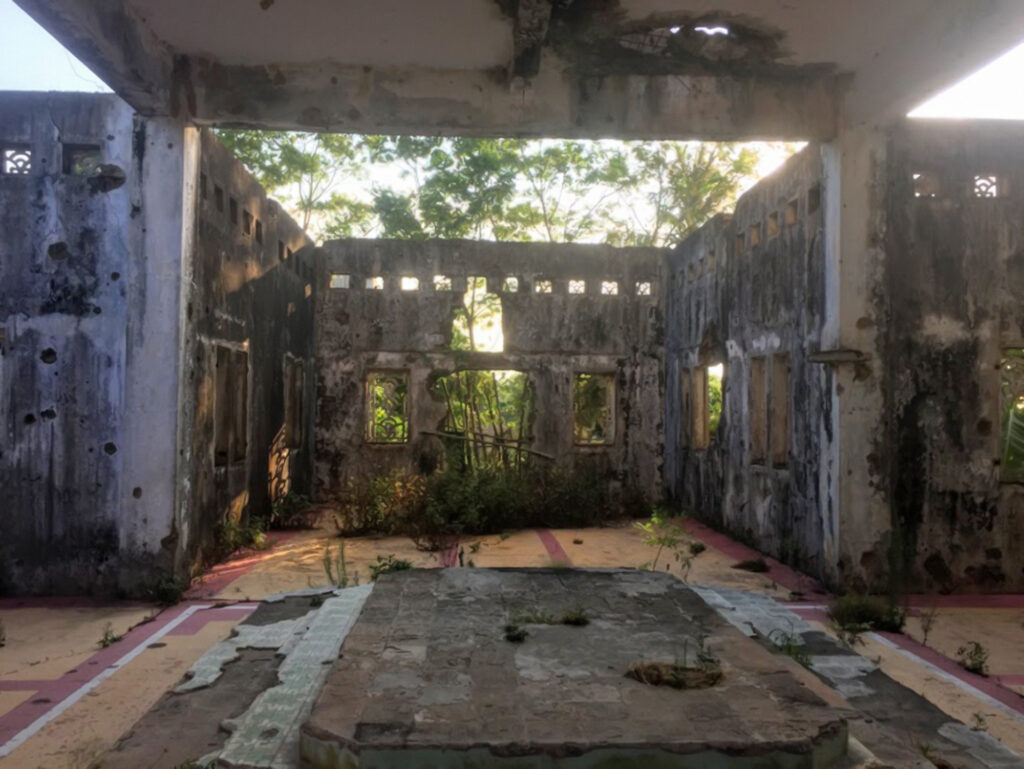
Finally, one of Vietnam’s most consequential leaders, Le Duan, was born in Quang Tri Province. Le Duan was the General Secretary of the Communist Party of Vietnam from 1960 to his death in 1986. While Ho Chi Minh was the revolution’s symbolic leader until his death in 1969, the torch had already been passed to Le Duan early in the decade. Just about every major strategy during the American period of the war is attributable to Le Duan, and his legacy in Vietnam is that of an impatient patriot that delivered reunification. General Secretary Duan was responsible for the switch from guerillas to regular PAVN units in the vanguard of numerous annual large scale PAVN offensives in the war, including the Tet Offensive and the Easter Offensive. He is honored with an absolutely massive statue in the center of Dong Ha City.

The province is still recovering from the war. There is a still big UXO problem. A high percentage of Quang Tri’s population is persons with disabilities, and the aftereffects of Agent Orange use are still present. But it’s getting there, and the hope is that Quang Tri can essentially be declared ‘UXO Free’ sometime in the next 5 years or so. Quang Tri was relieved of its provincial capital duties in favor of Dong Ha after 1975; today it is a slow-paced town with shady boulevards. It’s a very pleasant place in a conservative and traditional part of the country, and it’s a welcoming town. You won’t find many hotels or tourist infrastructure here, which is probably for the best. Twelve kilometers north of the town is Dong Ha, which is a convenient base for exploration of some of the war’s iconic places, including Khe Sanh Combat Base, Con Thien Firebase, Vinh Moc Tunnels, Camp Carroll, and the Rockpile.
SB